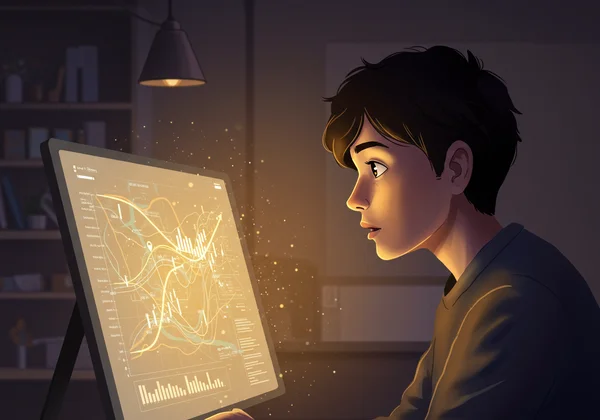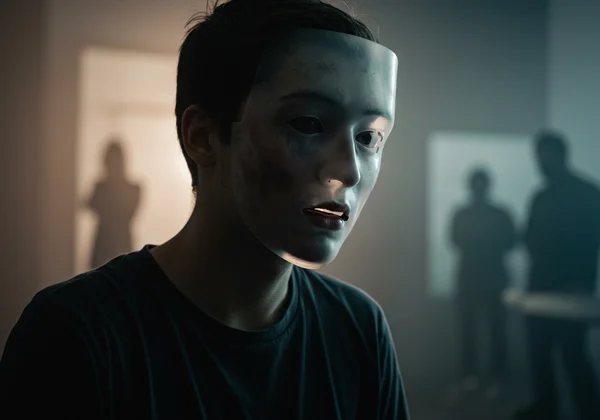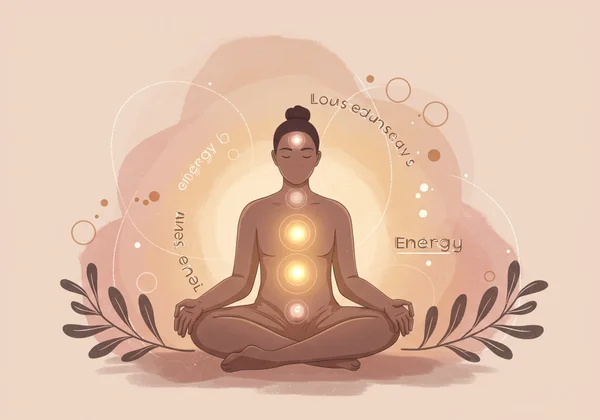Your CATQ Score: How to Reduce Autistic Masking
You've taken the CATQ test, and the number on your screen might feel like a revelation, a validation for a lifetime of feeling different. For many, seeing their camouflaging behaviors quantified is a powerful first step. But it often leads to a crucial question: How do I know if I'm masking autism and what can I do about it? This article is your guide to what comes next. We will explore practical steps to understand your score, reduce the exhausting habit of masking, and embrace a more authentic life. Your journey toward self-understanding is important, and this is the next chapter.
If you haven't taken the test yet, you can start your free assessment on our homepage to get your score. This scientifically validated tool is the first step toward clarity.
Interpreting Your CATQ Score: Beyond the Numbers
Receiving your CATQ score is more than just getting a number; it's gaining a new lens through which to view your life experiences. This score is a data point on your personal map, highlighting the energy you've invested in navigating a world that often feels designed for someone else. It validates the exhaustion, the feeling of playing a part, and the sense of disconnect you may have experienced.
What Your CATQ Score Truly Means for You
A higher catq score interpretation points to a greater tendency to camouflage autistic traits. It doesn't define who you are, but rather illuminates the strategies you've developed to cope and connect. This score is a compassionate acknowledgment of your efforts. It’s evidence that the social fatigue you feel isn't a personal failing; it's a logical consequence of sustained effort.
Think of it as a measure of the invisible labor you perform in social situations. This new understanding can be incredibly liberating. It shifts the narrative from "What's wrong with me?" to "What strategies have I been using, and are they still serving me?" This insight is the foundation for making conscious, empowered choices about how you engage with the world.

Understanding Compensation, Masking, & Assimilation
Your total CATQ score is broken down into three sub-scales, each representing a different facet of camouflaging. Understanding these can help you pinpoint your specific patterns. The differences between masking vs assimilation autism are subtle but significant.
- Compensation: This is the strategic part of camouflaging. It involves learning and applying social rules intellectually, like a script. You might consciously remind yourself to make eye contact, practice small talk in the mirror, or imitate the body language of others. It’s an active, often pre-planned, effort to bridge social gaps.
- Masking: This involves actively suppressing natural behaviors or stims and replacing them with more neurotypical-presenting ones. It could mean forcing a smile when you feel overwhelmed, hiding your intense interest in a special topic, or stilling your hands when you have the urge to fidget. This is about hiding your authentic self to avoid judgment.
- Assimilation: This is about trying to blend in so completely that you feel you must participate in social situations, even when they are draining or uncomfortable. You might attend a loud party despite sensory sensitivities or force yourself to socialize after work because you feel it's what's expected. It's the pressure to be "part of the group" at the cost of your own well-being.
By exploring your results on the social camouflaging scale, you can see which of these areas you rely on most.
Recognizing Your Autistic Masking Patterns
Once you understand the "what" of your score, the next step is to recognize the "how" and "when" of your masking behaviors in daily life. Camouflaging is often so ingrained that we don't even notice we're doing it. It has become an automatic, subconscious survival mechanism. Bringing these patterns into conscious awareness is the key to changing them.
Signs of Autistic Camouflaging in Daily Life
The signs of autistic camouflaging can be subtle and varied. Many people, especially those with undiagnosed autism in adults, may not recognize these behaviors in themselves until they are pointed out. Here are some common examples:
- At Work: You might have a "work persona" that is exceptionally friendly and outgoing, but you collapse from exhaustion the moment you get home. You might script your contributions to meetings or meticulously study the social dynamics of the office to avoid missteps.
- With Friends: You might find yourself mirroring your friends' opinions, mannerisms, or even their laughter to feel accepted. You may avoid talking about your deep interests for fear of being seen as "too much" or "weird."
- In Public: You might force yourself to make small talk with a cashier despite finding it stressful, or consciously soften your tone of voice to sound more approachable. You may wear uncomfortable clothes simply because they are socially appropriate.
Do any of these sound familiar? Recognizing them isn't about judgment; it's about gathering information for your journey forward.
The Cost of Constant Masking: Burnout & Exhaustion
Living behind a mask comes at a significant cost. The constant mental calculus of "Am I doing this right?" is profoundly draining and is a direct path to autistic burnout. This isn't just feeling tired; it's a state of chronic exhaustion that impacts your ability to function, leading to increased anxiety, depression, and a loss of skills you once had.
The emotional toll is just as high. Masking can create a deep sense of loneliness, as you may feel that no one knows the real you. It can also lead to a crisis of identity, where you're no longer sure who you are without the mask. Acknowledging this cost is essential for motivating change.

Practical Steps to Reduce Autistic Masking
Reducing your reliance on masking is not about suddenly dropping all your coping mechanisms. It's a gradual, compassionate process of learning to unmask selectively and live more authentically. This journey is unique to each person. If you're ready to explore this further, our CATQ online test is always available.
Prioritizing Self-Compassion & Energy Management
The first step is to be kind to yourself. You developed these masking strategies for a reason—to survive, to connect, to protect yourself. Thank your mind and body for getting you this far. Now, you can learn new ways of being that are less draining.
Start by treating your energy like a finite resource. After a demanding social event, schedule quiet time to recharge without guilt. This might mean saying no to an invitation or leaving a gathering early. Learning to manage your energy is a radical act of self-care.

Identifying Safe Spaces for Selective Unmasking
You don't have to unmask everywhere all at once. The key is selective unmasking. Start by identifying people and places where you feel safest and most accepted. This could be with a trusted partner, a close friend, a therapist, or an online community of other neurodivergent individuals.
In these safe spaces, experiment with letting a small piece of the mask slip. Maybe you allow yourself to stim freely, or you share an unfiltered thought about your special interest. Notice how it feels. Each small step builds confidence and reinforces that it is safe to be you.
Cultivating Authenticity: Setting Boundaries and Seeking Support
Cultivating authenticity is about aligning your actions with your internal values and needs. A crucial part of this is learning to set boundaries. This could be as simple as saying, "I don't have the energy to talk on the phone right now, can we text instead?" or "I need some quiet time."
Seeking support is also vital. Connecting with other autistic or neurodivergent people can be incredibly validating. You realize you are not alone in your experiences, and you can share strategies for navigating the world authentically. This shared experience reduces shame and builds a sense of belonging.
Your Journey to Authenticity Starts Now
Understanding your CATQ score is a significant milestone. It's the moment you trade confusion for clarity and self-criticism for self-compassion. This knowledge empowers you to move from unconsciously reacting to the world to consciously choosing how you want to live in it.
Reducing autistic masking is a journey, not a destination. There will be days when the mask feels necessary, and that's okay. The goal is progress, not perfection. By recognizing your patterns, managing your energy, and seeking out safe spaces, you can begin to build a life that feels less like a performance and more like home.
Ready to take the next step? Revisit your results or explore our resources to continue your journey of self-discovery.
Frequently Asked Questions About Autistic Masking & CATQ
What is a high score on the CATQ?
While the original research by Hull et al. (2018) established a cutoff score of 100 to differentiate autistic from non-autistic adults, it's important to view your score on a spectrum. A score above 100 suggests significant camouflaging tendencies, but any score provides valuable insight into your unique social strategies. The goal isn't to fixate on a number, but to use it as a tool for self-exploration, which you can begin with our free CATQ test.
How do I know if I'm masking autism?
You might be masking if you consistently feel exhausted after socializing, feel like you're "acting" in social situations, practice conversations beforehand, or suppress strong urges to stim (like flapping your hands or fidgeting). Taking a scientifically validated tool like the Camouflaging Autistic Traits Questionnaire (CATQ) can provide a quantified measure of these behaviors.
What are the signs of autistic camouflaging?
Common signs include forcing or faking eye contact, imitating others' gestures and facial expressions, scripting your conversations, and pushing yourself to socialize even when you're overwhelmed. It's essentially the conscious or subconscious effort to hide autistic traits to appear more neurotypical.
Can I be autistic and not know it?
Absolutely. This is particularly common in adults who did not fit the stereotypical presentation of autism in childhood, especially women and gender-diverse individuals. Many people receive a diagnosis later in life after years of feeling different without knowing why. An autistic masking test can be a helpful starting point in this journey of discovery.
Disclaimer: This article is for informational purposes only and is not a substitute for professional medical advice, diagnosis, or treatment. Always seek the advice of a qualified health provider with any questions you may have regarding a medical condition.